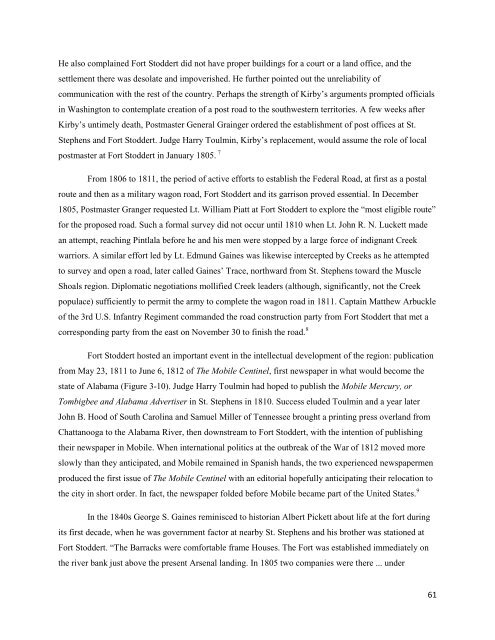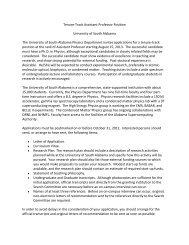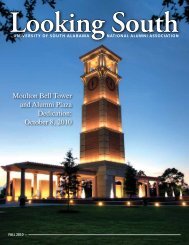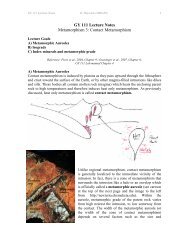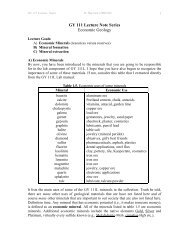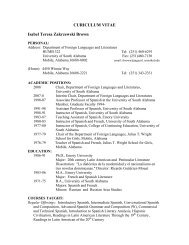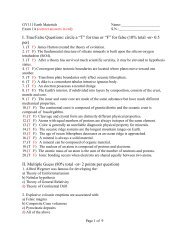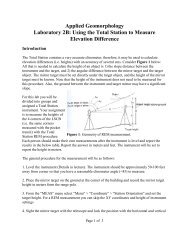Archaeological Survey of the Old Federal Road in Alabama
Archaeological Survey of the Old Federal Road in Alabama
Archaeological Survey of the Old Federal Road in Alabama
You also want an ePaper? Increase the reach of your titles
YUMPU automatically turns print PDFs into web optimized ePapers that Google loves.
He also compla<strong>in</strong>ed Fort Stoddert did not have proper build<strong>in</strong>gs for a court or a land <strong>of</strong>fice, and <strong>the</strong>settlement <strong>the</strong>re was desolate and impoverished. He fur<strong>the</strong>r po<strong>in</strong>ted out <strong>the</strong> unreliability <strong>of</strong>communication with <strong>the</strong> rest <strong>of</strong> <strong>the</strong> country. Perhaps <strong>the</strong> strength <strong>of</strong> Kirby’s arguments prompted <strong>of</strong>ficials<strong>in</strong> Wash<strong>in</strong>gton to contemplate creation <strong>of</strong> a post road to <strong>the</strong> southwestern territories. A few weeks afterKirby’s untimely death, Postmaster General Gra<strong>in</strong>ger ordered <strong>the</strong> establishment <strong>of</strong> post <strong>of</strong>fices at St.Stephens and Fort Stoddert. Judge Harry Toulm<strong>in</strong>, Kirby’s replacement, would assume <strong>the</strong> role <strong>of</strong> localpostmaster at Fort Stoddert <strong>in</strong> January 1805. 7From 1806 to 1811, <strong>the</strong> period <strong>of</strong> active efforts to establish <strong>the</strong> <strong>Federal</strong> <strong>Road</strong>, at first as a postalroute and <strong>the</strong>n as a military wagon road, Fort Stoddert and its garrison proved essential. In December1805, Postmaster Granger requested Lt. William Piatt at Fort Stoddert to explore <strong>the</strong> “most eligible route”for <strong>the</strong> proposed road. Such a formal survey did not occur until 1810 when Lt. John R. N. Luckett madean attempt, reach<strong>in</strong>g P<strong>in</strong>tlala before he and his men were stopped by a large force <strong>of</strong> <strong>in</strong>dignant Creekwarriors. A similar effort led by Lt. Edmund Ga<strong>in</strong>es was likewise <strong>in</strong>tercepted by Creeks as he attemptedto survey and open a road, later called Ga<strong>in</strong>es’ Trace, northward from St. Stephens toward <strong>the</strong> MuscleShoals region. Diplomatic negotiations mollified Creek leaders (although, significantly, not <strong>the</strong> Creekpopulace) sufficiently to permit <strong>the</strong> army to complete <strong>the</strong> wagon road <strong>in</strong> 1811. Capta<strong>in</strong> Mat<strong>the</strong>w Arbuckle<strong>of</strong> <strong>the</strong> 3rd U.S. Infantry Regiment commanded <strong>the</strong> road construction party from Fort Stoddert that met acorrespond<strong>in</strong>g party from <strong>the</strong> east on November 30 to f<strong>in</strong>ish <strong>the</strong> road. 8Fort Stoddert hosted an important event <strong>in</strong> <strong>the</strong> <strong>in</strong>tellectual development <strong>of</strong> <strong>the</strong> region: publicationfrom May 23, 1811 to June 6, 1812 <strong>of</strong> The Mobile Cent<strong>in</strong>el, first newspaper <strong>in</strong> what would become <strong>the</strong>state <strong>of</strong> <strong>Alabama</strong> (Figure 3-10). Judge Harry Toulm<strong>in</strong> had hoped to publish <strong>the</strong> Mobile Mercury, orTombigbee and <strong>Alabama</strong> Advertiser <strong>in</strong> St. Stephens <strong>in</strong> 1810. Success eluded Toulm<strong>in</strong> and a year laterJohn B. Hood <strong>of</strong> South Carol<strong>in</strong>a and Samuel Miller <strong>of</strong> Tennessee brought a pr<strong>in</strong>t<strong>in</strong>g press overland fromChattanooga to <strong>the</strong> <strong>Alabama</strong> River, <strong>the</strong>n downstream to Fort Stoddert, with <strong>the</strong> <strong>in</strong>tention <strong>of</strong> publish<strong>in</strong>g<strong>the</strong>ir newspaper <strong>in</strong> Mobile. When <strong>in</strong>ternational politics at <strong>the</strong> outbreak <strong>of</strong> <strong>the</strong> War <strong>of</strong> 1812 moved moreslowly than <strong>the</strong>y anticipated, and Mobile rema<strong>in</strong>ed <strong>in</strong> Spanish hands, <strong>the</strong> two experienced newspapermenproduced <strong>the</strong> first issue <strong>of</strong> The Mobile Cent<strong>in</strong>el with an editorial hopefully anticipat<strong>in</strong>g <strong>the</strong>ir relocation to<strong>the</strong> city <strong>in</strong> short order. In fact, <strong>the</strong> newspaper folded before Mobile became part <strong>of</strong> <strong>the</strong> United States. 9In <strong>the</strong> 1840s George S. Ga<strong>in</strong>es rem<strong>in</strong>isced to historian Albert Pickett about life at <strong>the</strong> fort dur<strong>in</strong>gits first decade, when he was government factor at nearby St. Stephens and his bro<strong>the</strong>r was stationed atFort Stoddert. “The Barracks were comfortable frame Houses. The Fort was established immediately on<strong>the</strong> river bank just above <strong>the</strong> present Arsenal land<strong>in</strong>g. In 1805 two companies were <strong>the</strong>re ... under61


